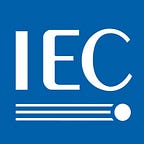Ringing the alarm bells
How AAL tech is helping the elderly to stay independent for longer
by Morand Fachot
Keeping the elderly and disabled active, independent and living at home for as long as possible is a major issue in many countries around the world. It has driven significant growth in many alarm, access and remote alert systems.
Protecting different users for different needs on different levels
Individuals of any age, who use and/or benefit from Active Assisted Living (AAL) devices, systems or services rely more and more on alarm, access and alert systems of different kinds to protect or grant them access to homes or other premises, to monitor their health remotely or to alert different services in case of emergency. These needs coincide to a great extent with applications increasingly used in smart home environments.
Security products for AAL environments and smart homes include cameras, motion sensors, door and window sensors and alarms, electronic locks and panic buttons.
Alarm and access control
IEC technical experts prepare International Standards for a wide range of applications and systems including electronic access control, alarm transmission, video surveillance, fire detection and fire alarm systems, and remote receiving and/or surveillance centres. Its work also covers interoperability between different services.
Advances in electronic components allow a wider range of applications that includes social alarm systems, which are part of the remit of the Standards developers.
It is worth noting that access control systems, alarm transmission systems, video surveillance systems and remote receiving and/or surveillance centres all have applications in AAL environments.
Protecting vulnerable people, which may be the case of AAL users, from unwanted intrusion in their homes is important. At the same time allowing them easier access is no less important.
Another important aspect is the possibility of alerting someone in case of difficulties resulting, for instance, from a fall or urgent health problem.
Monitoring AAL users in their home environments
Elderly people represent an ever-growing proportion of the population. By 2025, there will be 820 million people aged 65 and older globally. The shift in demographics towards an ageing population will make it impossible to keep everyone who needs care in hospital.
Fortunately, elderly people are on the whole in better health and more independent than in the past and may stay in their own homes or in care facilities longer. This is made easier over time by the gradual addition of sensors, tele-monitoring and, more recently, of contextual awareness to social alarm systems.
Advanced bio‑monitoring systems and remote monitoring technologies make it easier for elderly people to retain their independence and live at home for longer.
They include fall detectors and wireless sensors to track activity levels, sleeping patterns and medication schedules. People with dementia can have their homes fitted with automated sensors that check whether cookers have been left on or taps have been left to overflow, and if necessary alert caregivers via smartphones or tablets.
Semiconductor devices, including sensors, are covered in a number of IEC publications. Another focus of Standards work is discrete semiconductor devices, including Standards for components used in a variety of sensors.
Assessing the global financial value of alarm and monitoring systems for AAL users and other individuals in need of some form of assistance is very difficult, owing to the fact that many of these systems are not specifically targeted at such users, but are installed for a variety of other purposes.
This is rendered even more complicated by the fact that a number of medical devices are being used in the home environment for health and wellness monitoring.
Wearables and two-way systems playing a growing role
More recent categories of AAL-relevant systems include two-path alarm systems and wearable devices. These allow healthcare workers to monitor patients remotely and/or to alert carers, emergency services of issues affecting individuals or their direct environment.
This requires two-path processes for alarm transmission systems (ATS). Of course, a transceiver (transmitter/receiver) can both transmit and receive communications.
AAL users are set to benefit from additional services as more and more homes will become “Smart Homes”, thanks to new-built housing and to nationwide schemes to upgrade existing housing stocks to make them more energy-efficient and AAL-friendly in many countries.
In the Netherlands, funding schemes exist to provide a trans-sectorial approach to invest EUR 30 000 to make each house more energy-efficient and AAL ready.
AAL funding covers three areas:
· Remote care, with screen-to-screen care for the elderly; four hours of paid-for care per month (only as substitute for four hours of care in physical presence)
· Telemonitoring (of vital signs), with special arrangement between hospital and health insurers
· Screen-to-screen consultation with doctor, this is accepted and reimbursed as normal visit, but only the doctor can call in.
If many of these systems (with the exception of wearables) have to be fitted in existing housing stock, they will most certainly be installed in new building from the onset, like systems previously considered as expensive extras in the automotive sector are now standard equipment (such as air conditioning, automatic lights and wipers, airbags, ABS, etc.)
Alarm, access and remote alert systems are set to be installed in most houses in the future for the greater benefits of all residents who will, at some point in their lives, need certain levels of assistance to remain active or simply help them in in their daily lives.
This is an edited version of an article that appeared in the March 2017 edition of e-tech
